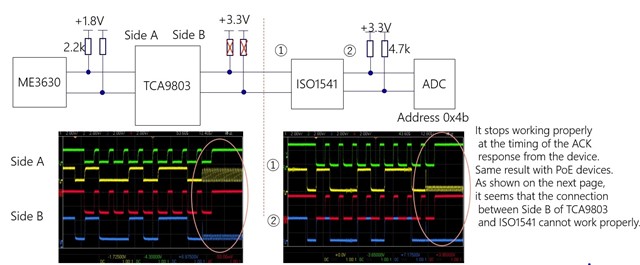Other Parts Discussed in Thread: ISO1541, TCA9800, TCA9509
Hi team:
My customer use TCA9803 cooperates with ISO1541,
There is a problem in the debugging, which is shown in the following diagram, which is mainly realized as the SDA signal, and the 1 side of ISO1541 cannot pull down the ACK of SDA to the normal level;
1-- We analyze the data sheets of the two chips, the minimum IILC of TVA9803 is 1000uA (1mA), while the IVOL of ISO1541 side 1 is 0.5-3.5mA,
2--Suspect the 1 side of ISO1541, when outputting VOL, the current limit does not meet the IILC of TVA9803;
3--Please kindly help to review this case according to the current hardware design scheme? PCB has been mass-produced;
Tks~
Block diagram:

Spec details:






